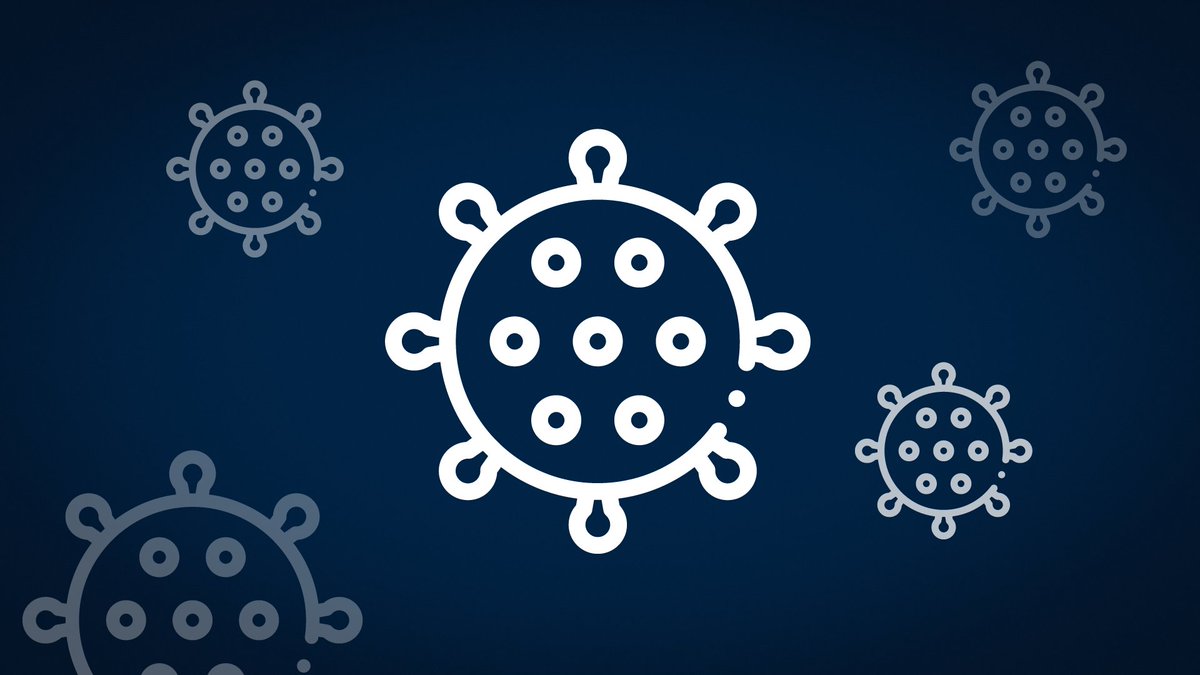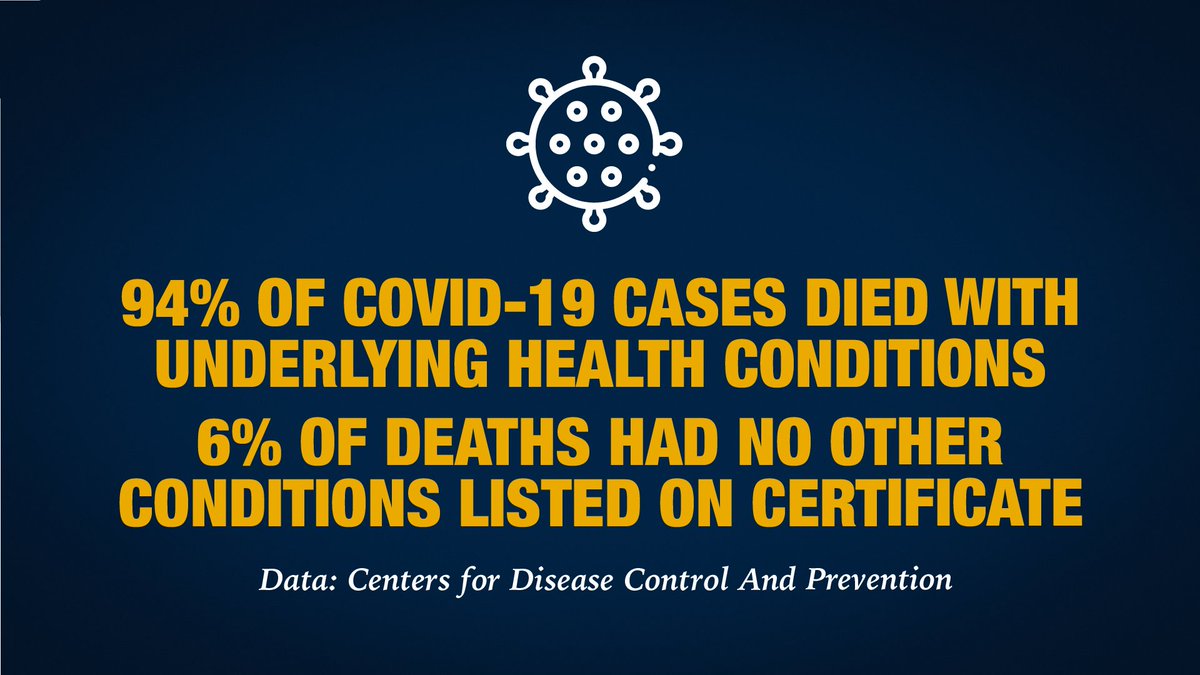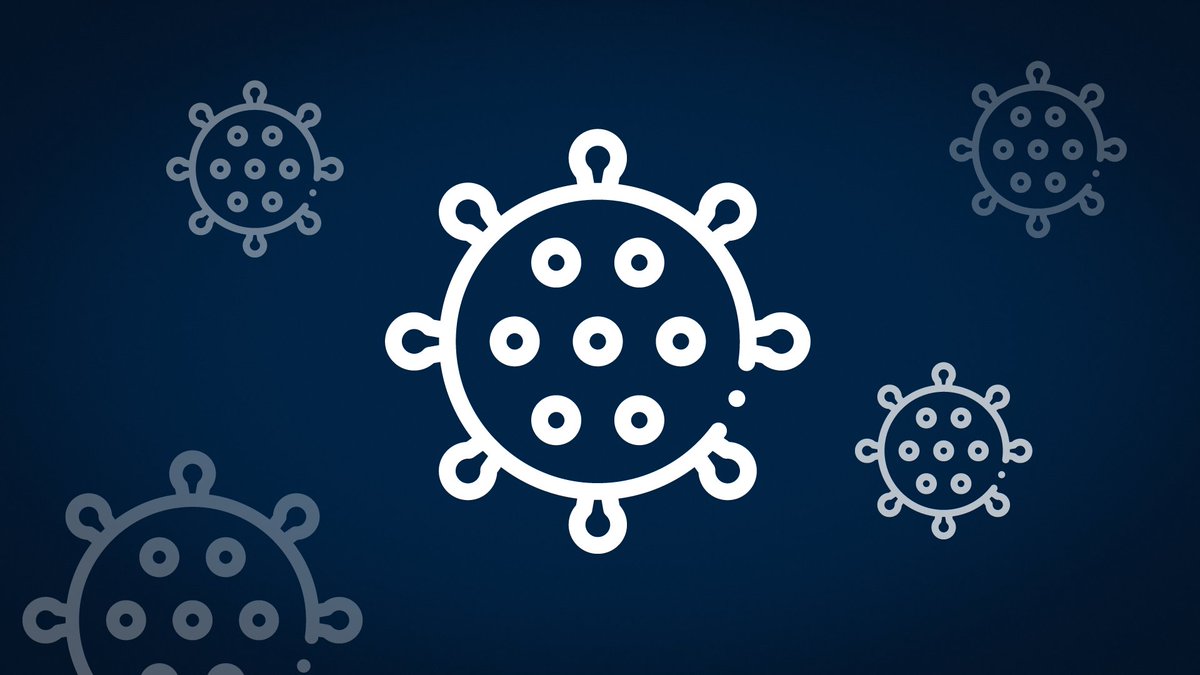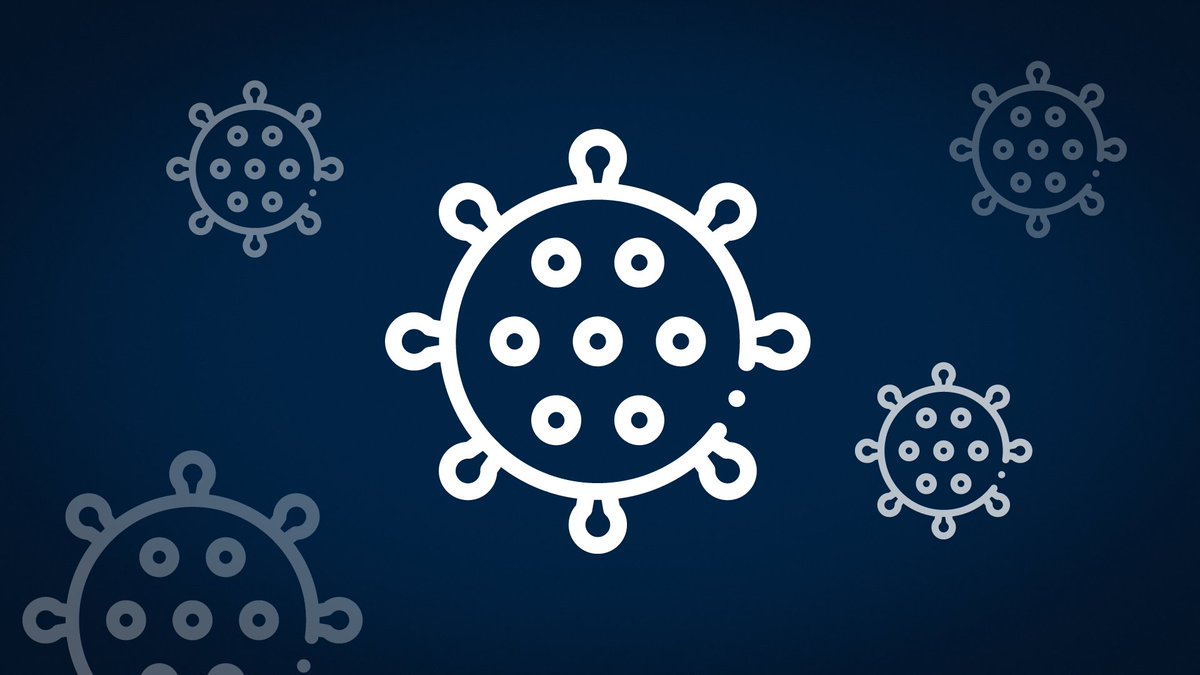There's been a lot of talk about a CDC report that said 94% of those with COVID-19 had underlying health conditions, which led some to say it is ONLY responsible for 6% of deaths attributed to it.
Let's look at what these numbers mean in this thread.
Let's look at what these numbers mean in this thread.

Earlier this month, the CDC released information that said 94% of those who died from COVID-19 had an underlying medical condition, or co-morbidity. The remaining 6% died from COVID-19 alone. But does that mean COVID-19 *only* killed 6% of people? No.
An underlying health condition means a person who is experiencing a health event also has some kind of other ailment. Do you suffer from asthma, or have a body mass index above 30? Those are examples of the many known at-risk COVID-19 underlying health conditions.
When someone dies from COVID-19, but has asthma, it isn’t a death attributed to asthma. COVID-19 is a respiratory infection that overwhelms the body in a lot of different ways - and we are finding out new ways all the time, such as heart issues with younger patients.
Think of COVID-19 as an accelerant. A patient living with asthma for many years, only to be hit hard by COVID-19, dies. Asthma is a contributing factor, but COVID-19 exposed a weakness in the body and led to the patient’s death. COVID-19 is a cause of death.
“These comorbidities are being scrutinized unfairly,” says Dr. Kathy Moffett of @WVUMedicine. Risk factors on death certificates - which the CDC data used - are up to the discretion of the physician, in determining the cause of a patient’s death.
As to whether or not the CDC can be pressured into looking at those death certificates to alter them: “The CDC can’t change those death certificates, either,” Moffett said.
“There are plenty of examples of perfectly healthy individuals who have no underlying conditions that die from COVID-19,” Moffett said, noting the passing of Broadway actor Nick Cordero, aged 41. He was considered a healthy adult prior to his infection.
Be cautious of those looking to reduce the severity of the pandemic. The same data applies to flu season deaths. A person with an underlying condition, but dies with the flu, is still a flu death. We must all remain vigilant against COVID-19 and be safe in our daily lives.

 Read on Twitter
Read on Twitter










